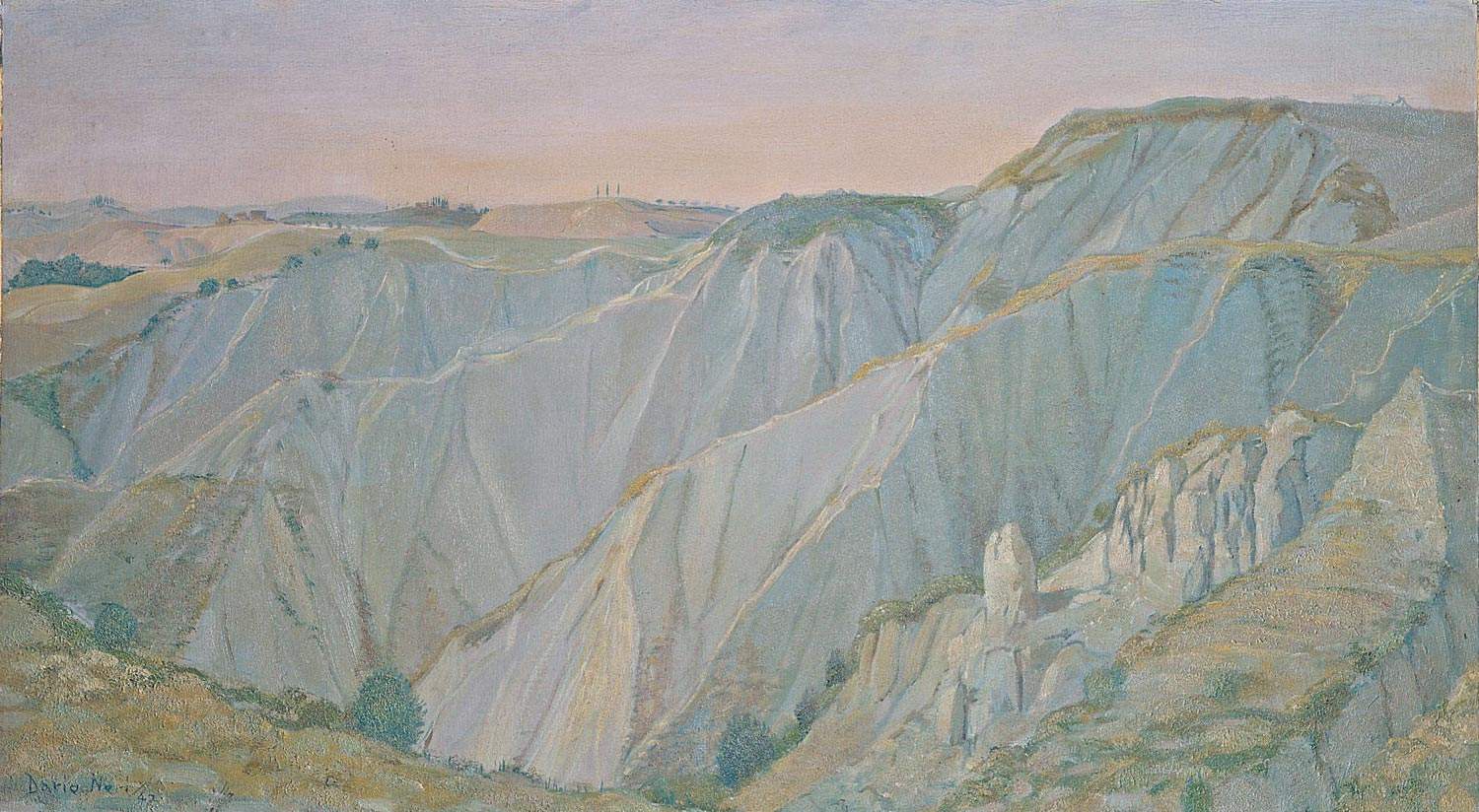Pienza, an exhibition on Dario Neri, the painter of the Sienese countryside.
From May 6 to November 5, 2023, the San Carlo Borromeo Conservatory in Pienza will host an exhibition dedicated to Dario Neri (Murlo, 1895 - Milan, 1958): entitled Dario Neri - Mario Luzi. The Landscape State of Mind and curated by Leonardo Scelfo, the exhibition traces Neri’s landscape production, also read through his relationship with poet Mario Luzi.
“It was a winter day, gray, windy,” recalls his son Paolo Neri, born in 1937. “My father asked me to accompany him to the countryside, he wanted to paint a landscape, he needed me to hold the easel on which he rested the canvas; I went with him and, hugging the legs of that easel, I fell asleep. He would paint from life, in the field, then refinish in the studio. And this approach was consistent with his character: he had a special sensitivity to beauty, a straightforward, spontaneous character; he literally thrilled, exhilarated by the spectacle of nature, and reproduced it with an almost irrepressible momentum.”
It was in 1929, after his marriage to Matilde Sclavo, that Dario Neri went to live in Campriano and there he began to paint the Sienese landscape, starting with Murlo and the Crete. But even earlier is the first known contact with Pienza: in 1924 architect Gino Chierici, Superintendent of Monuments of the Province of Siena, commissioned the 29-year-old Dario to do the interior and exterior decorations of Villa Benocci, which he had designed. It took the young painter about nine months to complete the work and he got to know the town and the area well. He was so fascinated by the loggias of Palazzo Piccolomini that he decided to reproduce them in the Campriano estate.
Dario Neri was not only a successful artist (“the greatest Sienese painter of our century,” Enzo Carli wrote about him in the late twentieth century; “the painter of the Sienese countryside,” he was called Carlo Emilio Gadda, in 1946) but also a successful manager, first at Sclavo, from 1935 to 1944 (during the war, moreover, Neri distinguished himself by giving refuge to a family of Jews, and was later awarded the medal of Righteous Among the Nations), and then with the Electa publishing house, which he took over in 1945 and relaunched in the art publications sector. He had significant roles in institutions and city life: he was author of the Palio poster (1928); prefectural commissioner in Murlo (1938); director of the Siena Art Institute (from 1939 to 1943); several times Captain of theWave (whose mounts he had designed since ’26), the first on June 27, ’37, then victorious in 1950; member of the Deputation of Monte dei Paschi (1951); awarded the Mangia d’Oro (1954).
He died, suddenly, in 1958, in Milan: “he had spent the last ten years of his life mainly between Florence and Milan,” his son Paolo still remembers, “he was seized by a heart attack on March 28, on a train, just as he was going to Milan; he managed to get home but not to save himself. He was an innovative and brilliant man of astonishing versatility, so much so that the famous U.S. art historian Bernard Berenson, whose publisher he was in Italy through Electa, affectionately called him ’the man of a hundred trades.’”
“We are delighted that the Lands of Siena, through Pienza’s fine initiative, is paying tribute to Dario Neri,” Paolo concludes. “He is an artist who, not only in our opinion, deserves more knowledge. And then this project responds to Siena’s need to live with the land. The beauty of Siena is the child of the Crete, the Amiata, the Val d’Orcia: lands that look towards Rome, highlighting the attraction that binds our city to the capital.”
Information about the exhibition can be found on the website of the Fondazione Musei Senesi: www.museisenesi.org
Image: Dario Neri, Sunset in the Crete.
 |
| Pienza, an exhibition on Dario Neri, the painter of the Sienese countryside. |
Warning: the translation into English of the original Italian article was created using automatic tools. We undertake to review all articles, but we do not guarantee the total absence of inaccuracies in the translation due to the program. You can find the original by clicking on the ITA button. If you find any mistake,please contact us.




























